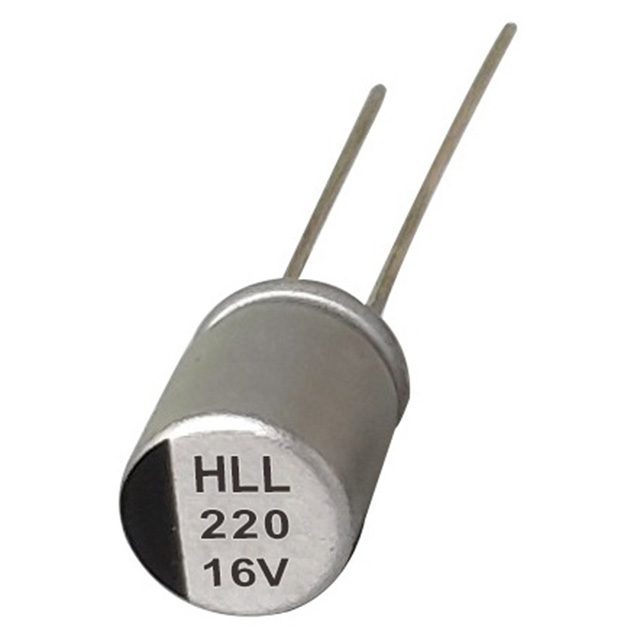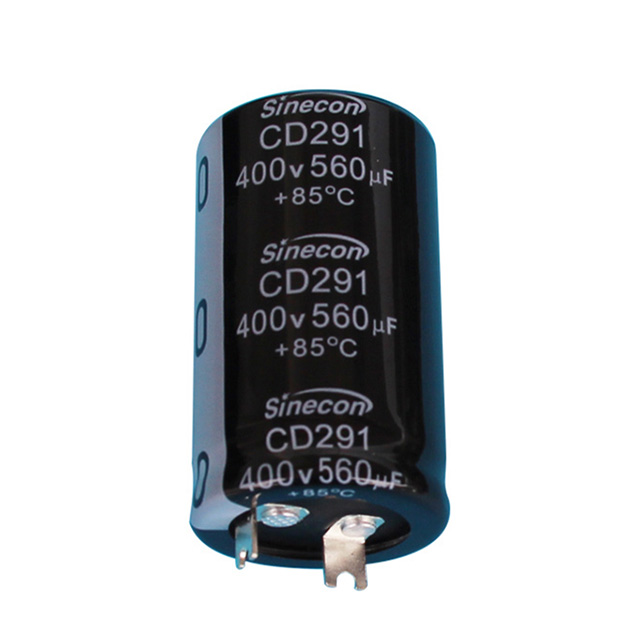The voltage rating of a Radial Electrolytic Capacitor defines the maximum voltage the capacitor can safely withstand across its terminals. If the voltage applied to the capacitor exceeds this rating, the dielectric material inside the capacitor may experience breakdown, leading to short circuits, leakage, or in extreme cases, a rupture. The dielectric material in electrolytic capacitors is essential for storing electrical charge, and once it fails, the capacitor cannot function as intended. This could lead to complete failure of the capacitor, rendering it ineffective and potentially causing damage to surrounding components in the circuit. Proper voltage rating selection ensures that the capacitor operates within safe limits, preventing damage from excessive voltage stress.
Overvoltage is a common issue that can occur due to voltage spikes, surges, or transients in electrical systems, and it can be a significant threat to Radial Electrolytic Capacitors. If the voltage exceeds the rated value, it leads to an immediate increase in internal stress, especially on the dielectric material, causing it to degrade over time or fail completely. Capacitors are designed to handle short-duration voltage surges, but prolonged exposure to overvoltage conditions can accelerate electrolyte degradation, causing a permanent loss of capacitance and reliability. Ensuring the voltage rating is sufficiently above the maximum expected operating voltage can significantly reduce the risk of capacitor breakdown and circuit failure due to voltage-related stress.
The capacitance value of a capacitor defines its ability to store charge, and this value is directly affected by the voltage rating. When a Radial Electrolytic Capacitor operates close to its voltage rating, it maintains its capacitance and other electrical characteristics more effectively, ensuring that it performs its intended functions—whether that’s smoothing power supply voltages, filtering noise, or energy storage. However, when the voltage exceeds the rated value, the internal electrolyte can begin to break down or dry out, reducing the capacitor's ability to store charge effectively. This degradation leads to a decline in capacitance and an increase in leakage current, both of which significantly impact the circuit's performance and overall system efficiency. By selecting a capacitor with a voltage rating higher than the expected operating voltage, the circuit can maintain optimal capacitance and performance throughout its service life.
As the applied voltage nears the capacitor’s rated voltage, internal resistance within the capacitor increases, leading to higher temperatures. Excessive heat can accelerate the breakdown of the electrolyte inside the capacitor, leading to increased leakage current and a higher risk of thermal runaway. High leakage current indicates that the capacitor is no longer functioning efficiently and is consuming more energy in the form of heat, which can lead to system inefficiencies and, in extreme cases, catastrophic failure. A higher voltage rating helps maintain the capacitor's efficiency by reducing the heat generated during normal operation and limiting the leakage current, thus extending its useful life and ensuring consistent performance. Capacitors that are subjected to higher-than-rated voltages often experience accelerated aging and early failure, so maintaining an adequate safety margin in the voltage rating is critical for system reliability.
In most electrical systems, the voltage supplied can fluctuate, especially in industrial or high-load applications, where power surges or voltage transients are common. These fluctuations can temporarily push the voltage higher than the nominal operating value. By selecting a Radial Electrolytic Capacitor with a voltage rating that exceeds the maximum expected voltage by at least 20-30%, users create a safety buffer to absorb these temporary spikes without risking damage to the capacitor. This margin of safety ensures that the capacitor remains operational during voltage spikes, inductive kickbacks, or lightning surges—common occurrences in power grids and electronic systems. Without a sufficient margin, the capacitor could fail under transient conditions, potentially causing damage to other components in the circuit, increasing maintenance costs, and decreasing system uptime.















